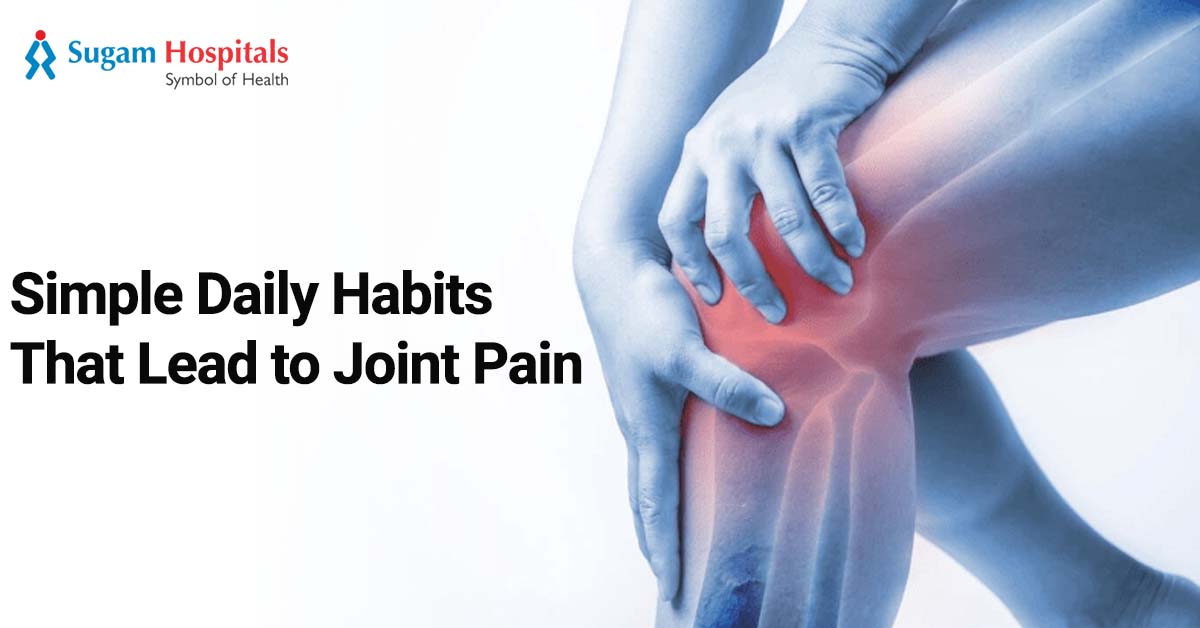Simple Daily Habits That Lead to Joint Pain

Simple Daily Habits That Lead to Joint Pain
August 8, 2025 by adminJoint pain doesn’t always start with a blatant injury or if you have a condition. Sometimes, it’s the smallest daily behaviors that we barely think about that slowly wear your cartilage down, stretch the muscles, and inflame the joints, over the months or years. Whether it’s the way you sit, what you eat, or move (or don’t move), your daily routine could be causing more of your joint pain and discomfort than you realize.
Let’s go over a few common but usually unnoticed behaviors that could be quietly damaging your joints and how you can change them.
1. Sitting for Long Hours
You may think sitting for long periods is an innocent act, after all, you’re diligent about a desk job, or binging on a Netflix series. There’s nothing wrong with sitting! However, sitting too long definitely can diminish joint flexibility and our hip, knee, and lower back joints may become stiff if we have been sitting for long periods of time.
As a result, the surrounding muscles around these joints dull, weaken, and decrease their performance capacity and support, thus putting more load on the actual joint.
Taking small movement breaks every 30-60 minutes will not only wake you up, it can prevent long-term joint stress.
2. Skipping Warm-Ups and Stretching
Getting right into workouts and doing high-impact workouts when you have not warmed up is expensive on the joints. Muscles require time to get ready and when they are not doing their job, that stress falls on the joints to absorb.
Everyday movements such as climbing stairs or lifting a heavy bag may stress the joints where it should not, to put pressure on the joints (given that the body is stiff or unprepared).
A quick stretch before activity (or after) prevents stiffness and makes the joints work better, decreasing the chance of wear and tear on the joint surfaces.
3. Wearing the Wrong Footwear
Your shoes can have a greater impact on your joints than you realize. Shoes that are not supportive, or are lacking adequate cushioning, can change your posture and walking style and eventually put strain on the joints of your knees, hips, and sometimes lower back.
Flat sandals and outdated sneakers, or simply wearing heels regularly, can slowly cause strain to your joints without overt indicator.
4. Ignoring Your Posture
Bad posture be it hunching over a desk, bending your head down with a phone in hand, or standing with your weight lopsided causes a misalignment in your whole body. Now and then, alignment will be off and the joints would have to work harder to keep you upright.
The ongoing stress of poor posture creates stiffness, but it also contributes to degenerative joint disease in your body, specifically the neck, shoulders, and lower back.
5. Lack of Regular Physical Activity
While overuse or overstrain may be dangerous, so too is the opposite sedentary lifestyle. The joints require movement to receive circulation. This means less blood flow to the cartilage and joints of the body, which can lead to cartilage degradation, muscle wasting or loss, and weight gain, which puts more stress on your joints.
Including low-impact exercises such as walking, yoga, or swimming, several times per week helps ensure joints remain well lubricated and in working order.
6. Overuse of Screens and Devices
We have a new set of joint problems thanks to the digital age. People are using smartphone, laptop, and tablet devices almost constantly, and phrases like “texting thumb” and “tech neck” were born. Over time, the stress of small, repetitive movements, combined with weird wrist or neck positions, can really start to strain the tendons or joints, leading to pain.
The first thing to do is to allow your hands and neck a break and adopt ergonomic changes that are good for overall joint health.
7. Consuming Too Much Processed Food
What you consume not only impacts your weight, it can also influence levels of inflammation in your body. Diets high in processed, sugary and trans fat foods can foster chronic inflammation, which tends to correlate with joint pain primarily in patients with arthritis, although not exclusively.
Conversely, consumption of “anti-inflammatory” foods including leafy greens, omega-3s and berries, serve to support the function of joints and relieve inflammation.
8. Carrying Heavy Bags on One Shoulder
Whether you utilize a backpack, handbag, or briefcase to carry necessary items, consistently carrying weight on one side can result in muscle constraints in the opposite side carrying that weight. Over time the unbalanced weight places unbalanced stress on your spine and shoulder joints. An initial discomfort can develop into a chronic joint problem if the behavior isn’t changed.
Switching sides and thinking about carrying your possessions in a backpack style bag so there is balanced support would allow for a more even load.
The journey to joint pain doesn’t always start with injury or advanced age; it often starts with small, incremental yet seemingly inconsequential choices that we may not even notice. If you become more aware of ergonomic postures and movement, your meals, and your daily rituals, you will be able to protect your joints for the long term.
If you are already suffering from joint pain, it’s never too soon to get the care of an expert. Sugam Hospital uses advanced diagnostics of your body along with individual treatment, addressing the root of your joint pain. Schedule a consultation with the best orthopaedic doctor in Chennai today and move pain-free tomorrow.

